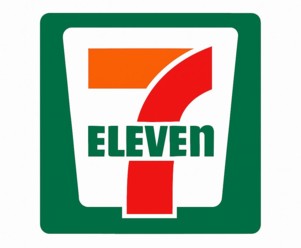ADP Paystub: How to Access, Read and Use Your ADP Pay Statements
By Jaden Miller , August 19 2025

If you’ve ever been paid through a company that uses ADP, you must have heard of the term paystub or pay statement. In simple terms, an ADP paystub is the digital record of your paycheck. It shows not just how much you earned, but also all your pay details, like taxes withheld, benefits, and contributions.
This guide will help you understand your ADP paystub better. You may be a new employee logging into ADP for the first time. You may also be a former employee who needs an old pay statement. If you just want to understand what all those abbreviations and numbers actually mean, this is also for you.
Here, we’ll explain everything step by step, including how to access your ADP paystub login. It explains how to download or print your pay stubs, and all the information you’d see. By the end of this article, you’ll know exactly how to get, read, and use your ADP paystub properly.
What Is an ADP Paystub Generator?
As an employee, you need to understand how ADP actually works. It is a payroll platform that your company uses to process all of your paychecks. On the platform, your employer provides the information, which basically includes the hours worked, your salary and benefits, and tax setup.
With all of that information, the ADP paystub generator uses it to provide your document. Because your employer sets up the access, the information you’ll see on ADP may vary. This, however, depends on the company you work for.
So, if you’re asking, “What exactly shows up on an ADP pay stub?” Typically, you’ll see a breakdown of your earnings. Here’s a thorough breakdown of it:
-
The Earnings Section: This is where you’ll see how your pay was calculated. If you’re usually paid hourly, it will show the number of hours you worked multiplied by your rate. If you're a salaried employee, you’ll see the paycheck amount that you agreed with your employer.
This section also includes different extras like overtime, bonuses, or commissions. Most paystubs include two columns: Current and Year-to-Date. Current is what you earned this pay period, while YTD is your total amount for the year.
-
Taxes: After your earnings, you’ll find all your tax withholdings. These usually include federal income tax, state tax (if your state has one), and sometimes local taxes. You’ll also see your FICA deductions covering Social Security and Medicare. Your stub might show multiple state tax entries if you work in more than one state during the year.
-
Deductions: Here you’ll see the amounts that are taken for benefits and other programs. It includes your Pre-tax deductions, like your health insurance, retirement contributions, or HSA/FSA accounts. These are usually subtracted before taxes, and they lower your taxable income. It also includes your Post-tax deductions, such as union dues or garnishments, which come out after taxes are applied.
-
Employer Contributions: Many ADP stubs list what your employer pays you. It can be their portion of your health insurance or 401(k) match.
-
Net Pay and Deposit Details: This is the amount that you eventually get. If you use direct deposit, your paystub will show how your employer splits your paycheck into different bank accounts.
-
YTD: The YTD column shows your cumulative earnings, taxes, and deductions for the year, and you need to view this section regularly. It helps you notice any errors early, track your tax withholdings, and prepare for things like filing your W-2.
Where You Can Find Your ADP Paystub as a Current Employee
If your company uses ADP for payroll, the good news is that you don’t have to wait for paper stubs. The process of getting your document is online. You need to, however, know which ADP system your employer uses, because ADP offers different platforms.
For most employees, one of the options is ADP Workforce Now. This is the most common portal where you can log in. When logged in, click on the “Pay” tab, and instantly see your pay statements. There’s also the ADP Portal, which is sometimes called iPayStatements, and it works in a very similar way. It’s just a different login page, depending on how your employer sets it up.
If you prefer handling things on your phone, use the ADP Mobile Solutions app. Once logged in, the app allows you to view recent pay statements, check your balances, and download PDFs immediately. The app is convenient if you don’t always have easy access to a computer.
The option you use depends on how your employer registered your account. Some companies use the web portal, while others also make the app available. If you’re not sure, ask your HR or payroll department. They’ll tell you which ADP login paystub the company uses for employees.
How Former Employees Can Get Their ADP Paystub
If you’ve already left your job but still need a copy of your pay stubs, you can still get them through ADP. The process is just a little different from being a current employee.
However, as an employee, you’ll start by going to the ADP paystub login page. There, you’ll see an option that says “Find Me”. Then, you’ll enter your former employer’s name or old work email. ADP uses this to check whether your records are still linked in their system.
Whether you’ll still have access or not after you leave depends on how your previous employer set things up. Some employers remove employees' ADP access once they’re no longer on their payroll. Some allow the former employee to log in for a limited time.
If you can’t get yours online, the next step is to contact your old HR or payroll administrator. They’ll then provide your past pay stubs directly or guide you on how to do so.
How First-Time Users Can Log In to ADP
Getting started with ADP is not really complicated. However, there are a few steps you need to follow if you’re just logging in for the first time. Here’s how to:
-
Get your registration code
Your employer will give you a registration code, which connects your ADP account to your company’s payroll records. Without it, ADP cannot confirm which employer you belong to, so make sure you get this code. You can get it from your HR or payroll department.
-
Create your ADP account
Go to the ADP registration page and enter your code. You’ll then be asked to fill in some personal details. It is usually your name, date of birth, and the last four digits of your Social Security number. This information verifies that you are really setting up the account.
-
Use the “Find Me” option if needed
If you don’t have a registration code, ADP also offers a “Find Me” feature. By entering details about your employer and yourself, ADP can help you locate your record in the system and guide you through the setup.
-
Set up your login credentials
Once you’re able to confirm your identity, you’ll then create a username and password. Make sure you choose one that is secure but easy for you to remember.
Uses of an ADP Paystub
Your ADP paystub is more than just a record of your paycheck. It has many practical uses, and these are some of them:
-
Income Verification: When you apply for an apartment lease or a car loan, you must show proof of income. Your ADP paystub is an official document that shows exactly how much you earn and who your employer is.
-
Budgeting and Tax Preparation: You can track how much money is coming in and going out by looking at your earnings and deductions. These amounts are calculated using the ADP paystub calculator while generating your document. This, therefore, makes it easier for you to plan your budget and also prepare ahead for the tax season.
-
Tracking Year-to-Date (YTD) Totals: Your paystub records your yearly earnings, taxes, and deductions. Make it a habit to always check your YTD numbers against your W-2 for the whole year. This ensures accuracy and avoids surprises when you file your taxes.
Common Abbreviations and Codes You’ll Find on Your ADP Paystub
Some of the abbreviations may look new to you. So, here’s a quick guide to help you understand the most common ones:
-
Standard Tax Abbreviations
-
FWT – Federal Withholding Tax.
-
SWT – State Withholding Tax
-
OASDI – Old Age, Survivors, and Disability Insurance (essentially Social Security).
-
MED – Medicare deduction.
-
Retirement and Benefit Codes
-
401(k) – Contributions to your employer-sponsored retirement plan.
-
HSA – Health Savings Account contributions.
-
FSA – Flexible Spending Account deductions.
-
Earnings and Deduction Codes
ADP uses short codes to represent different types of earnings and deductions. For example, “REG” means regular pay, and “OT” means overtime. These codes create space on your paystub, but it varies depending on how your employer sets it up.
-
Employer Codes
Some companies create their own codes for unique benefits, deductions, or allowances. You can check your employer’s HR or payroll department if you see a code you don't recognize.
In Summary
Understanding your pay stub is a way to stay in control of your finances. With ADP, logging in is easy. You usually just need to go online or use the mobile app. Once you log in, carefully read and review every detail in your pay stub. If you find something confusing or notice that your account isn’t working the way it should, don’t stress. The next step is for you to reach out to your company’s HR or payroll department.
We also offer accurate and professional pay stubs for records, loans, or personal use. Our paystubs generator makes it quick and stress-free. Visit us and let us help you keep your finances organized.
Frequently Asked Questions
Similar Articles
We’ve helped numerous individuals and businesses create professional documents! Create yours today!










